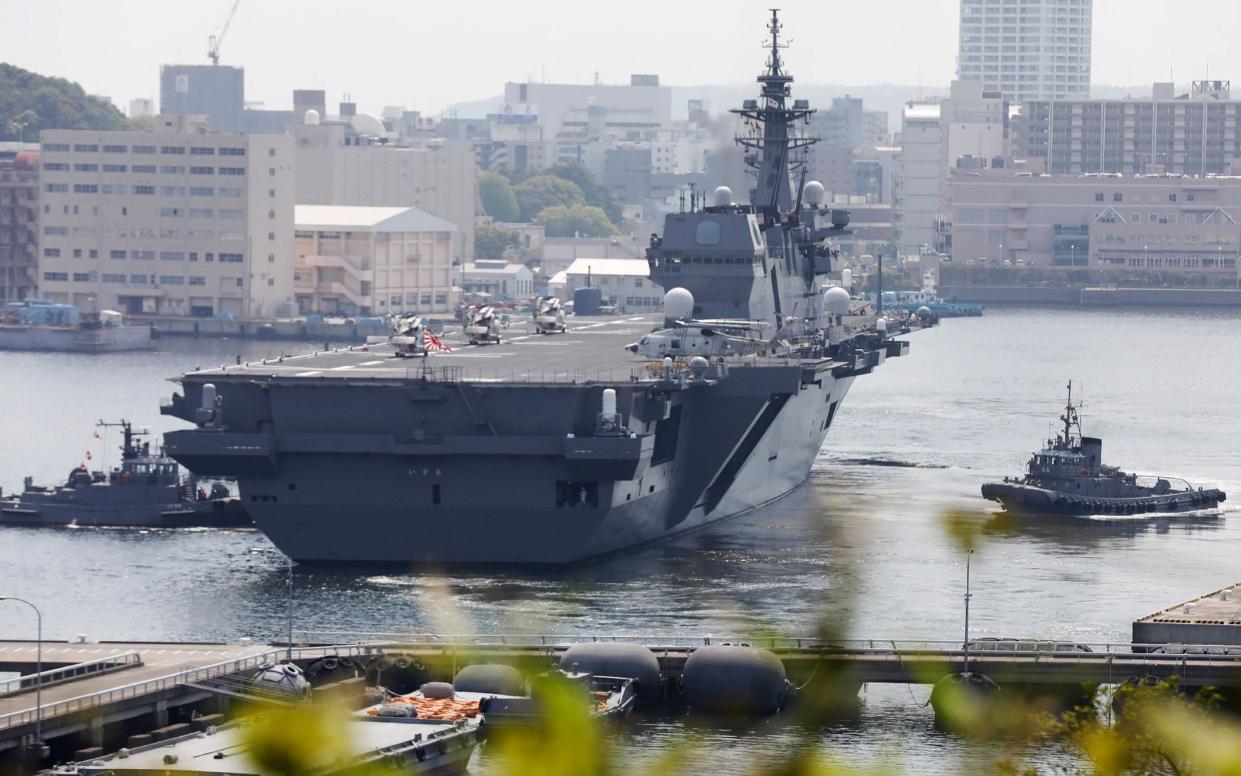Japan’s F-35B jump-jet carriers could tip the balance of naval power in the Pacific
The Japanese navy’s first post-World War II aircraft carriers are almost ready for combat duty. But every day of delay represents risk for a US-led naval alliance that’s counting on the Japanese fleet for critical support during a possible war with China.
The Japanese navy last operated ships carrying fixed-wing warplanes nearly 80 years ago, in the epic carrier battles of World War II. Slowly rebuilding over decades, Tokyo’s fleet prioritized defensive vessels: diesel-electric submarines for patrolling near-shore water, helicopter-equipped frigates for hunting enemy submarines and missile-armed destroyers to escort the frigates and defend the homeland against ballistic missiles. Indeed, the Japanese navy’s formal title is “the Japanese Maritime Self-Defence Force”.
But the strategic calculation in the halls of power in Tokyo evolved as China grew wealthier, more aggressive and more authoritarian starting in the 1990s – a process that has accelerated under nationalist leader Xi Jinping. Successive Japanese administrations have reinterpreted Japan’s post-war constitution to allow for more assertive military operations. And that has freed the Japanese navy to revive its dormant carrier capability.
Fleet planners turned to a pair of 813-foot helicopter carriers – Izumo and sister ship Kaga – and, in 2020, launched a program to convert both vessels into full-fledged aircraft carriers compatible with the American-made Lockheed Martin F-35B stealth jump jet. F-35Bs are also used aboard British carriers and by the US Marines from American big-deck amphibious ships, which – like Japan’s carriers – do not have catapults or arrester wires.
The work would take nearly a decade and cost tens of millions of dollars. Unwilling to simply remove the decade-old ships from front-line service in order to complete the conversions all at once, the navy is doing the work in phases as each vessel returns to a shipyard – Yokohama for Izumo, Hiroshima for Kaga – for planned maintenance every five years.
Izumo’s rework – reshaping her deck, moving a self-defense gun that impedes flight operations and reorganizing internal spaces – started in 2020. Kaga’s own rework began a year later. The first phase of that ship’s transformation ended on March 29. Now Kaga is halfway to being a real aircraft carrier.
Both vessels are scheduled to be complete and ready for jets in 2027. The Japanese air force is buying 42 of the vertical-landing F-35Bs to fly from the two new flattops. Each ship should be able to support more than two dozen F-35s. The US Marine Corps flew a few of its F-35Bs from Izumo three years ago as a proof of concept.
By 2027, the Chinese navy should have at least three aircraft carriers in front-line service, up from two today. The US Navy is in no position to match the Chinese fleet’s expansion all on its own.
The Americans have been struggling for more than a decade to grow their fleet from today’s 290 or so combat vessels to 350, the number multiple analyses have identified as the minimum requirement for an ever-expanding list of security responsibilities in an increasingly dangerous world.

Two failed design concepts – the Zumwalt class destroyer and the Littoral Combat Ships – have produced inefficient and short-serving ships. Alongside these, a deepening labour shortage in the US naval shipbuilding sector has depressed the American ship-count.
The Chinese navy crossed an important though largely symbolic threshold last year when its total number of warship hulls exceeded the number of hulls in the US Navy. The count is symbolic because American ships are, on average, much bigger and more powerful than Chinese ships are.
Still, China’s naval expansion raises the stakes as the Chinese Communist Party in Beijing continues to insist on “unifying” democratic Taiwan with autocratic China – by force, if necessary. More and more, the United States is counting on its allies to help defend Taiwan.
All eyes are on Australia and Japan. The Australian fleet is in the early years of an ambitious expansion – one that hinges on an expensive three-way submarine alliance with the United States and the United Kingdom. The Japanese fleet, however, is already the fifth biggest in the world by tonnage after the US, Chinese, Russian and British fleets.
The Japanese navy is a powerful regional force, with some of the world’s best frigates, destroyers and diesel-electric submarines. What the fleet lacks is offensive potential: the ships, munitions, training and logistics to sail beyond range of land-based air cover in order to attack enemy forces thousands of miles away – say, in the South China Sea or the vast reaches of the Philippine Sea.
It’s there, in those dangerous waters, that a naval war over Taiwan could rage. To safely project forces thousands of miles and keep them there in the face of enemy fire, the Japanese need carriers with fixed-wing fighters. The jets can swing between defensive and offensive missions – that is, protecting the naval task force one day and then, the next day, launching missiles at enemy ships.
A pair of Japanese carriers, one of which should be available for operations at any given time three years from now, would significantly reinforce an allied fleet around Taiwan. The US Navy’s fleet response plan requires six of its 11 carriers to sail within three months of a crisis, but the Navy normally keeps one of those ships in the Mediterranean, Red Sea or Persian Gulf.
The Americans might be able to deploy five carriers to the Pacific for an apocalyptic clash with the Chinese fleet. Or they might face simultaneous Russian aggression that diverts a flattop or two to the Atlantic Ocean. A Japanese carrier adds depth and flexibility to a critical capability.
But not before 2027.


